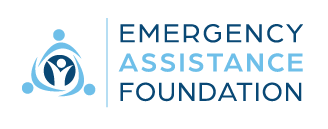
How Relief Funds Can Contribute to an Organization’s ESG Initiatives
August 22, 2022
The Importance of National Domestic Violence Awareness Month
September 20, 2022August 22, 2022
Establishing a disaster and hardship relief fund can help ensure that your organization is ready to assist your team members when they need it most. When considering a relief fund, start with these steps:
1. Learn about disaster and hardship relief fund best practices.
From legal and tax regulations to determining a fund’s charitable class and grant criteria, there are many things to consider when establishing a fund. Here is a valuable resource to start learning the basics of a relief fund. In addition, Emergency Assistance Foundation’s 10-year report explores the past, present and future of the relief fund industry.
2. Educate senior leadership and stakeholders.
Organizations working to establish a disaster and hardship relief fund must realize the importance of gaining leadership buy-in early in the process. Because senior leadership is vested with the authority to make decisions that can change and propel the organization, they are the ones that must support ideas like a relief fund from ideation to implementation.
The more leadership understands about disaster and hardship relief funds and the advantages to both the organization and its team members, the more likely they are to support sponsorship.
3. Develop expectations for the fund.
It is important that your organization has realistic expectations and goals for a relief fund regarding the following:
- The amount of time the organization will need to set aside for education about the fund.
- Budgeting for the launch and continued support from the corporation, foundation and team members to sustain the fund with enough donations.
- Who will be internally responsible for managing the relief fund and which department it will sit in.
- How your organization will measure the success of a relief fund (for example, number of donations, number of applications, total grants awarded).

4. Get approvals to establish a relief fund program.
Establishing a relief fund program requires the approval and support of leadership throughout the organization. Leadership from all departments including IT, Human Resources, CSR, Finance, and Marketing should be involved in the approval process from the start. When presenting information for approval, here are some things to consider:
- Leadership attitudes toward and support of a relief fund are often correlated to the overall success of a fund.
- Showing leadership’s commitment to team members’ well-being by establishing a relief fund can directly impact the organization in many ways, from boosting team member morale and productivity to increased retention rates.
- Buy-in from leadership not only triggers a sense of belonging within the organization, but also shows team members that management is committed to helping their own.
Here are 3 ways to help gain leadership’s support:
- Explain the advantages of a relief fund. Some of the many beneficial advantages are:
- Establishing a relief fund can alleviate the stress that disasters & hardships put on members within your organization and allow them to stay focused on recovering from the event.
- Relief funds can boost morale, improve the company’s reputation, and highlight its culture.
- Having co-workers contribute to a fund that helps their colleagues shows that the organization has a supportive workplace.
- When Emergency Assistance Foundation, a third-party fund administrator, administers the relief fund, contributions to a fund are tax-deductible and assistance is awarded as a tax-free grant to recipients.
- Showing the impact a relief fund can have on impacted individuals by sharing these testimonials.
- Connect establishing a relief fund to business objectives. When leaders can see how a relief fund relates to their overall business objectives, they are more likely to get on board. Establishing a relief fund and engaging team members with it as part of a company’s broader vision will make all the difference when team members themselves are in need.
- Be persistent.
Even if you present leadership with all the data and information, you may still receive a “no” for various reasons. From concerns about integrating the program across a disbursed workforce to not having tech enabled team members and more, leadership may not be ready to move forward. When you work with a third-party fund administrator, like EAF, a dedicated team will assist. Just because leadership says no the first time, does not mean that they always will. It is important to find out why leadership said no to continue the conversation in the future.
5. Make a plan to communicate the fund internally.
Announcing the fund internally is one of the most important steps when getting started. You should focus on fund education and engagement to ensure that leadership and team members know which events and expenses qualify for support, who is eligible to receive assistance, how to apply for assistance, and how to contribute to the fund through donations. It is important to have strong supporters of the relief fund program throughout your team from those working on the ground floor to leadership.
Once a fund is announced, ongoing and regular communication is necessary to keep team members informed and engaged. This can be done through storytelling, sharing fund analytics, e-newsletters, printed flyers, videos, a company intranet, postcards, at company meetings and more. Keeping the fund front and center year-round will keep program awareness high within the organization and increase donations, applications, and support of the fund.
Is your organization ready to sponsor a relief fund with a third party or revamp your current relief fund?
If your company is interested in establishing a relief fund, you can learn more about what a partnership with Emergency Assistance Foundation looks like by contacting us. By establishing a fund with us, your organization can assist members of your team who are affected by hardships and disasters.
Author: Lori Rogers, VP of Corporate Operations
Emergency Assistance Foundation




